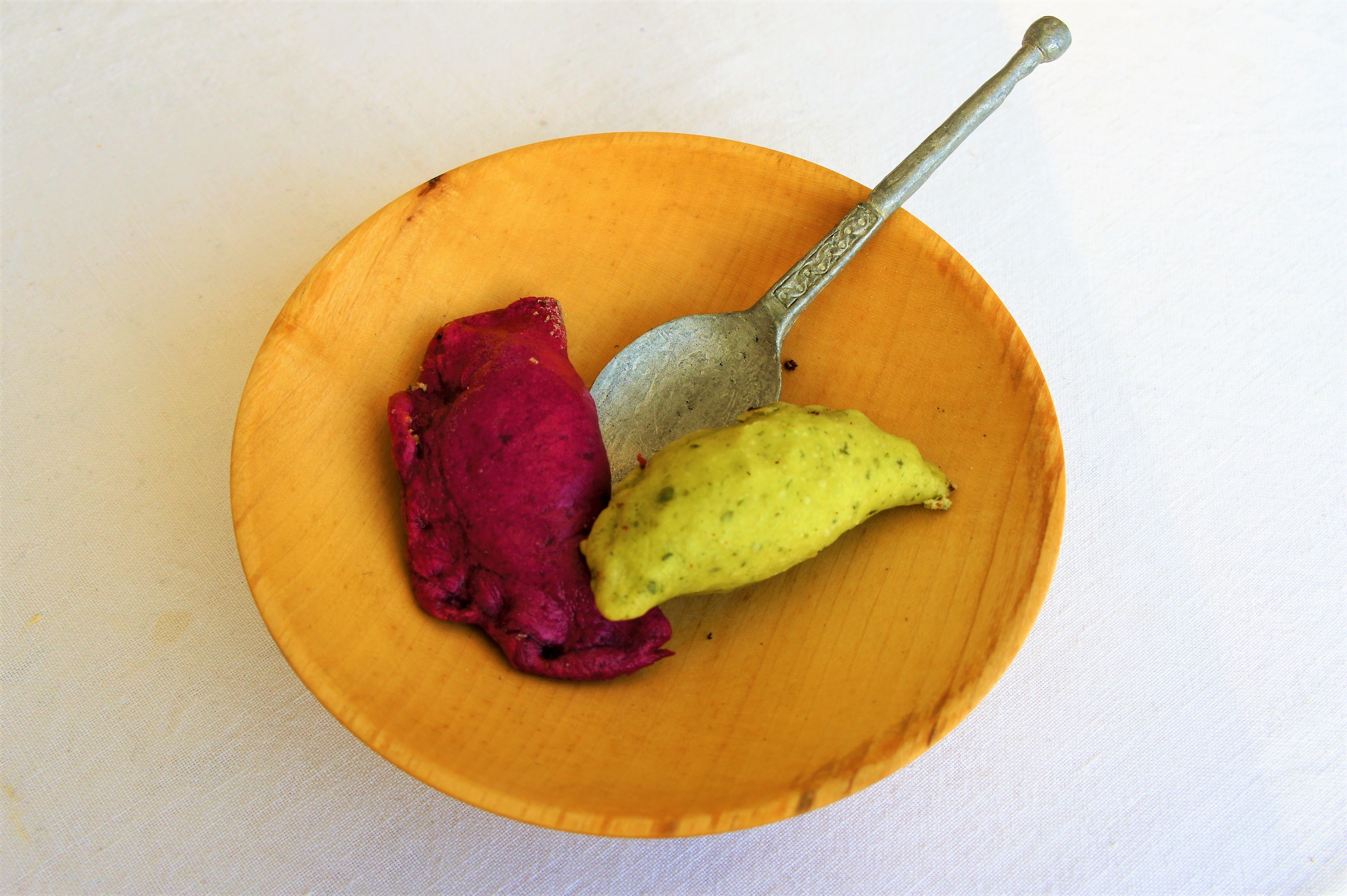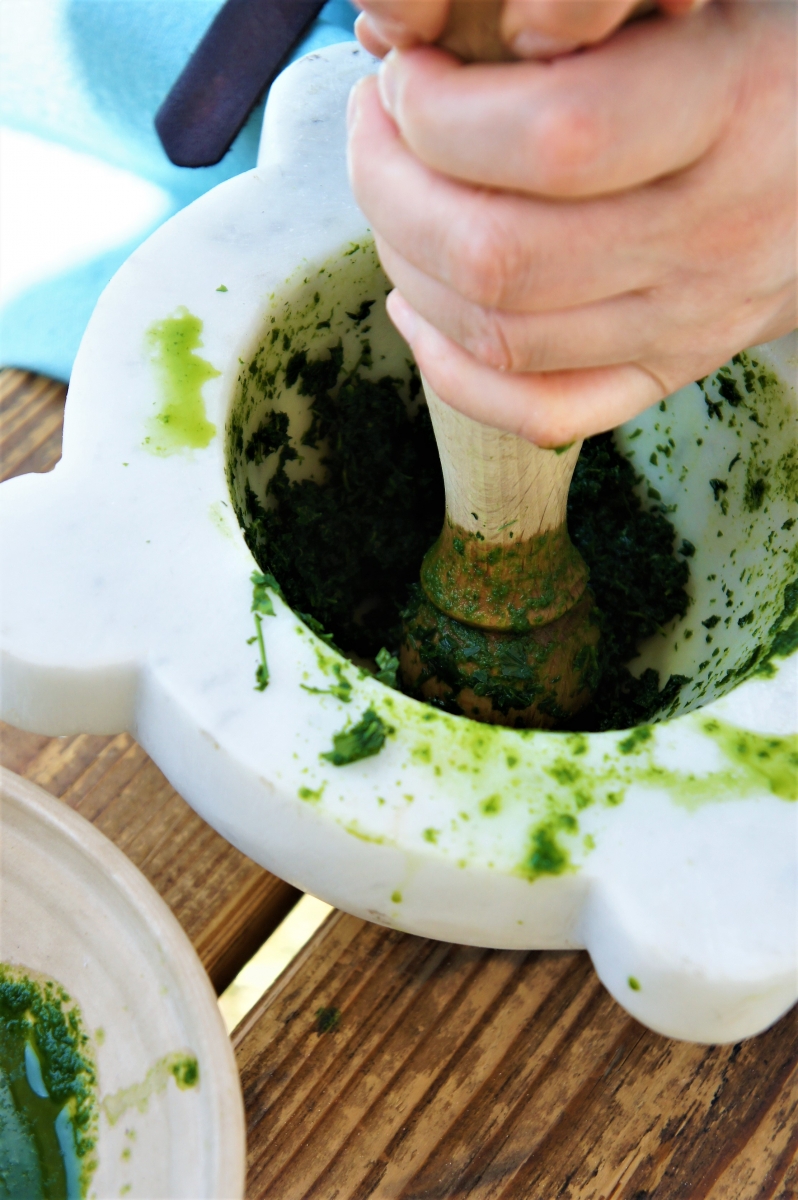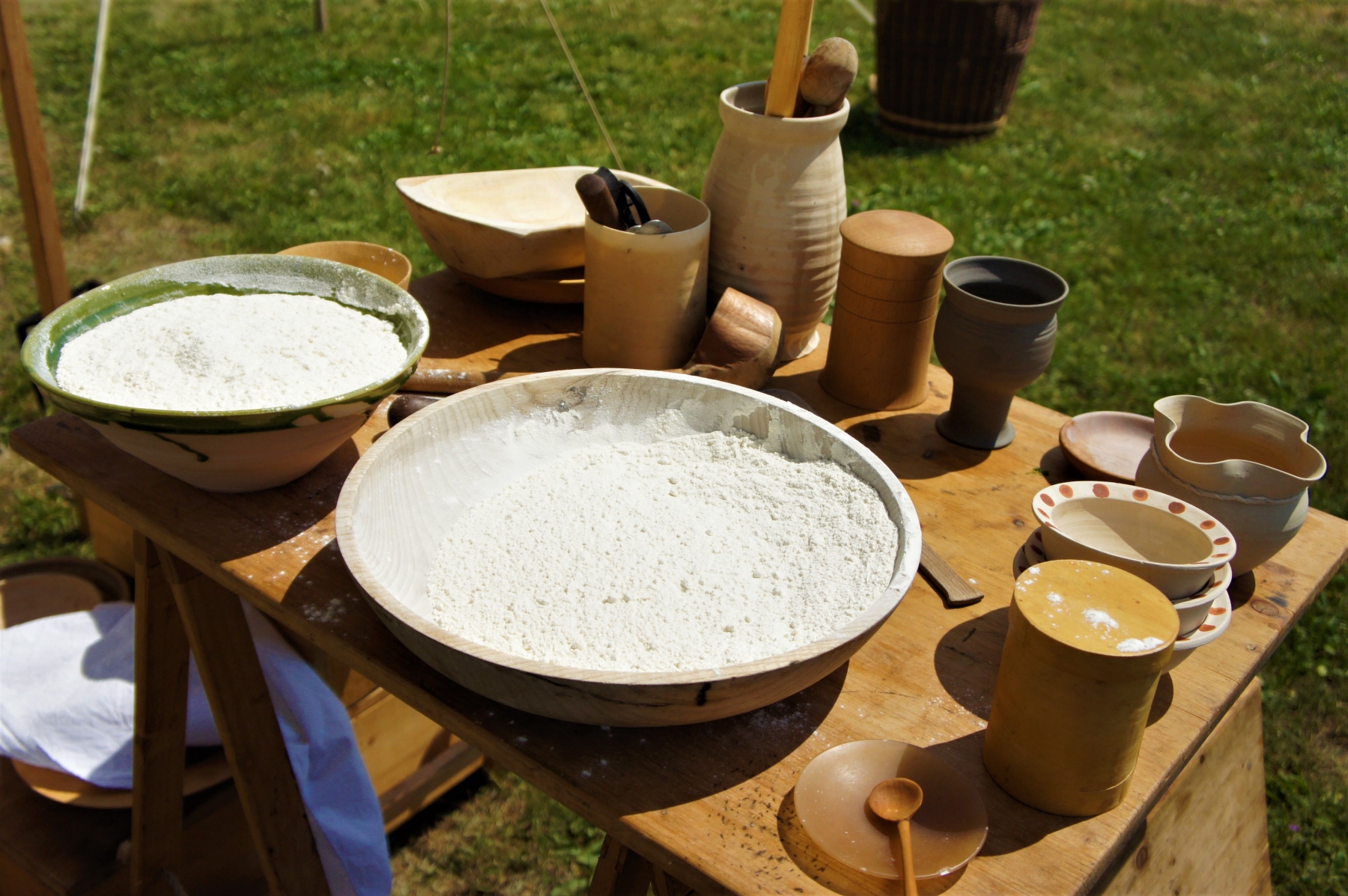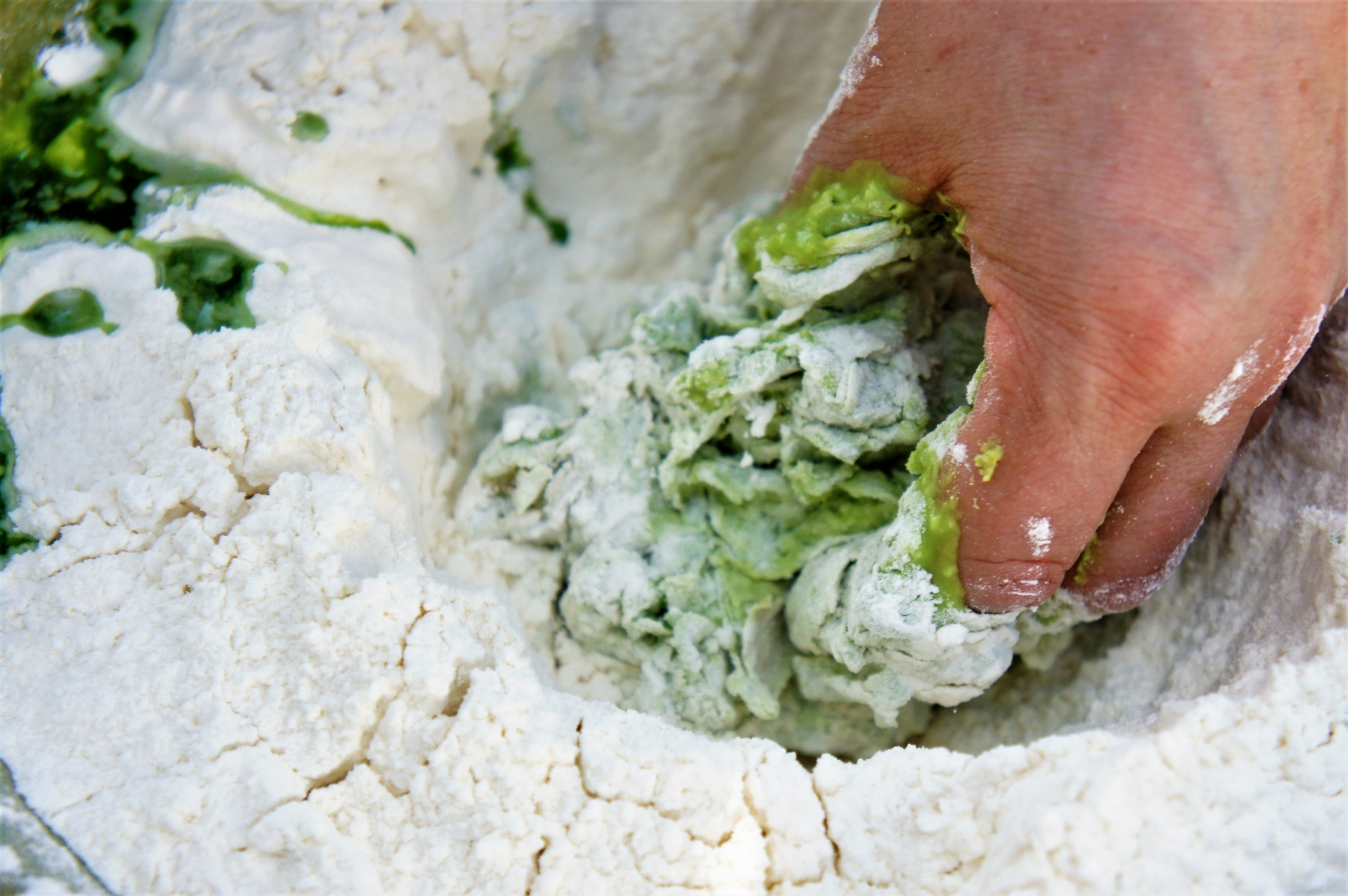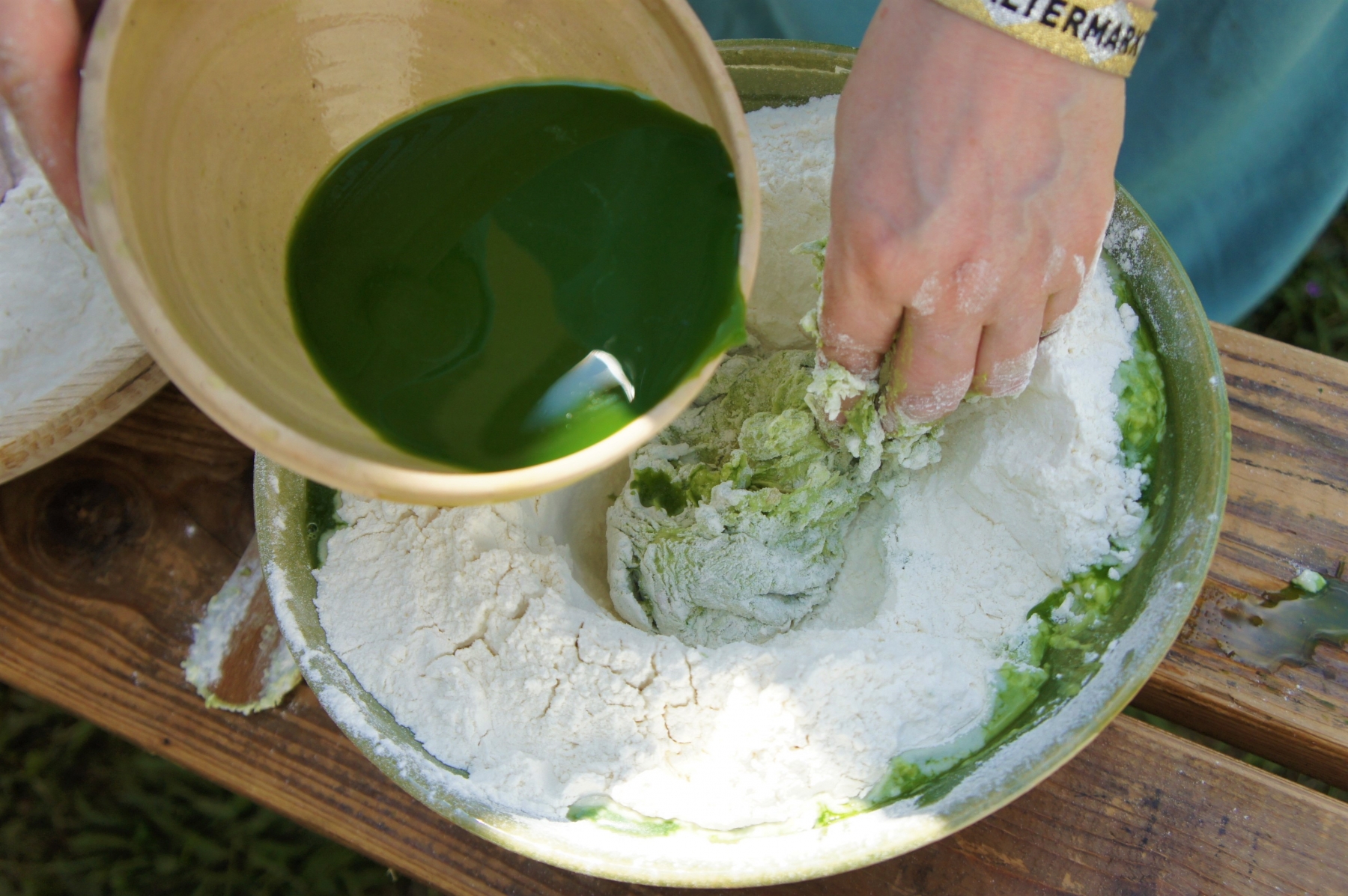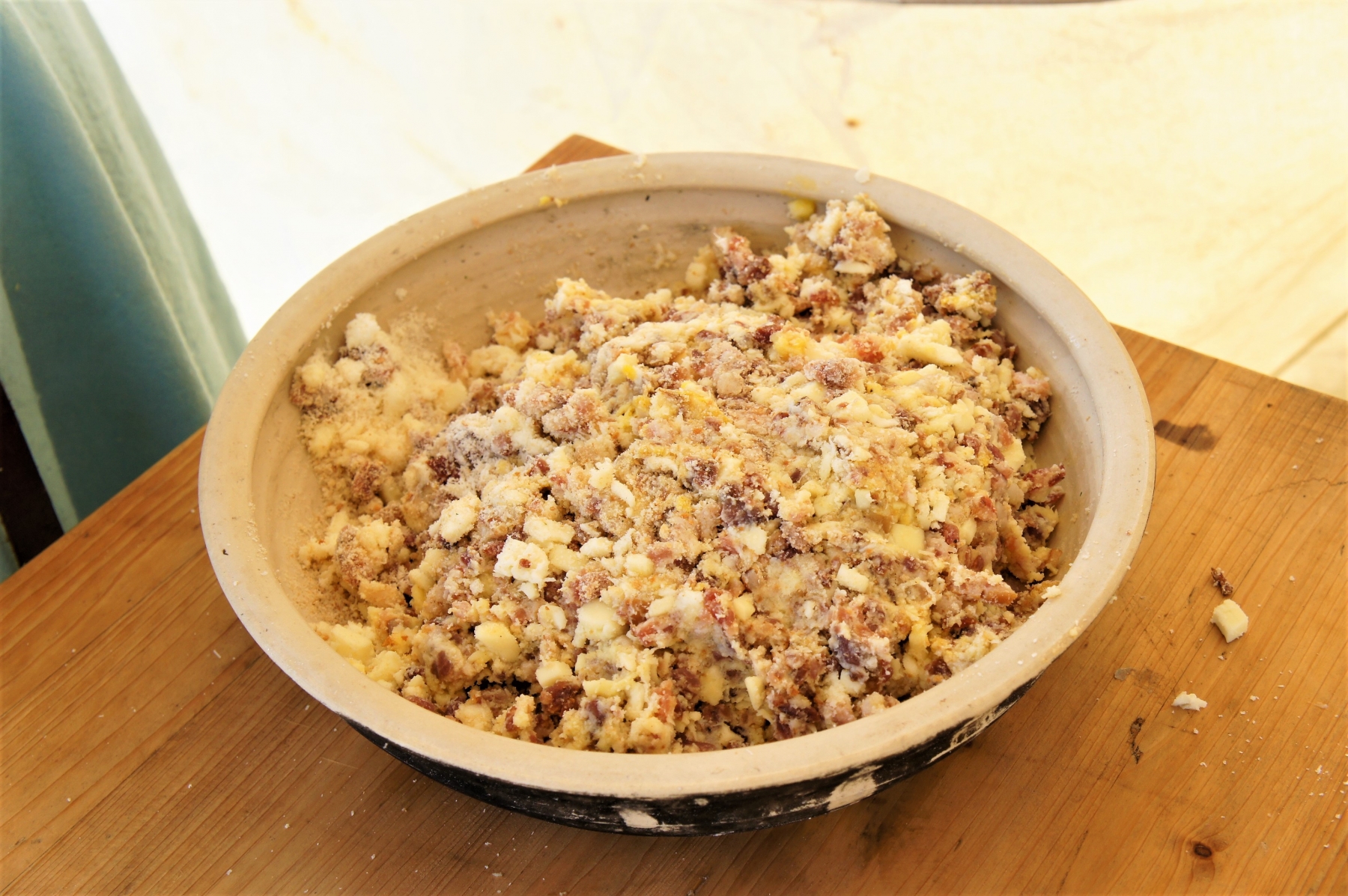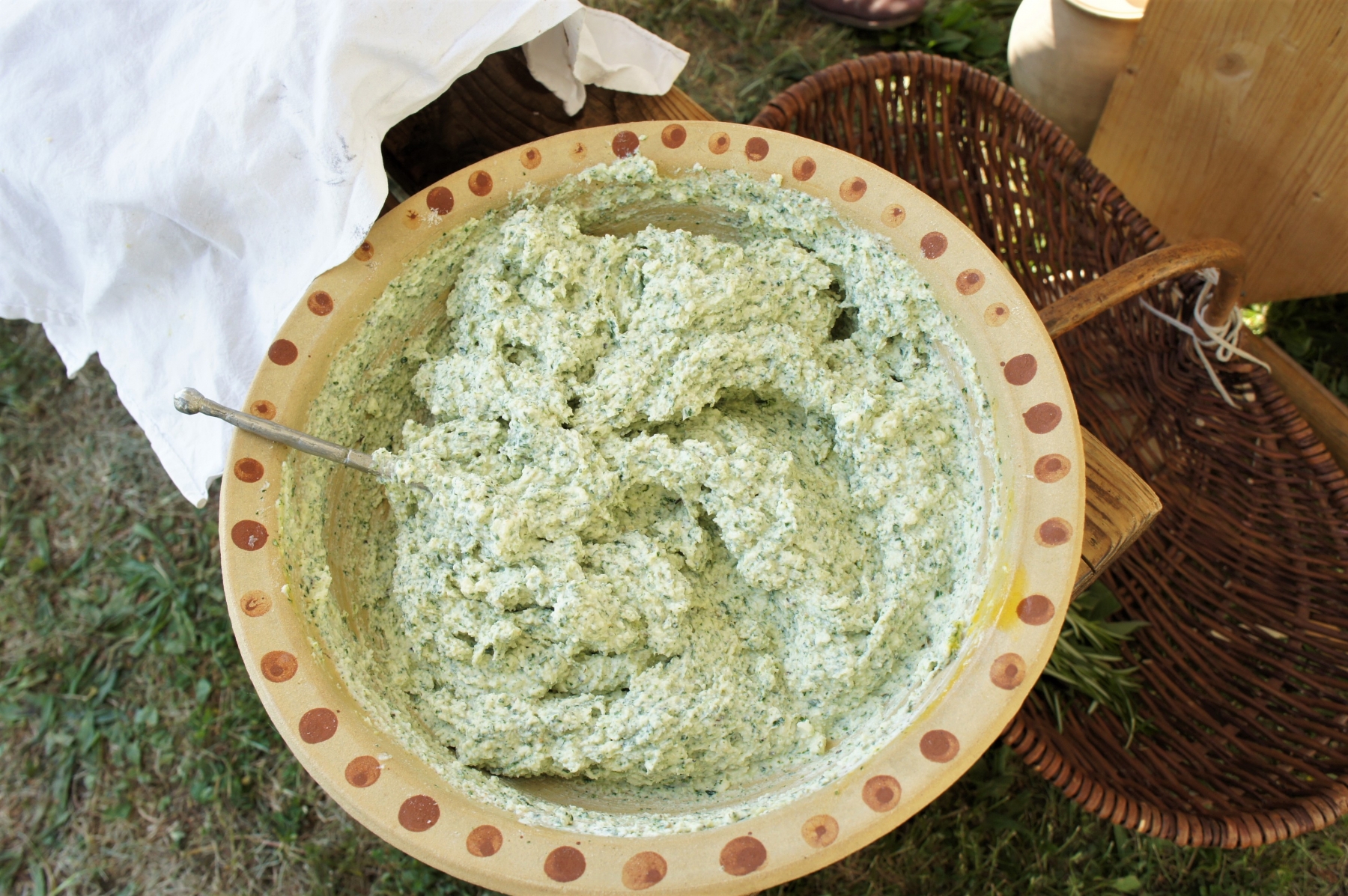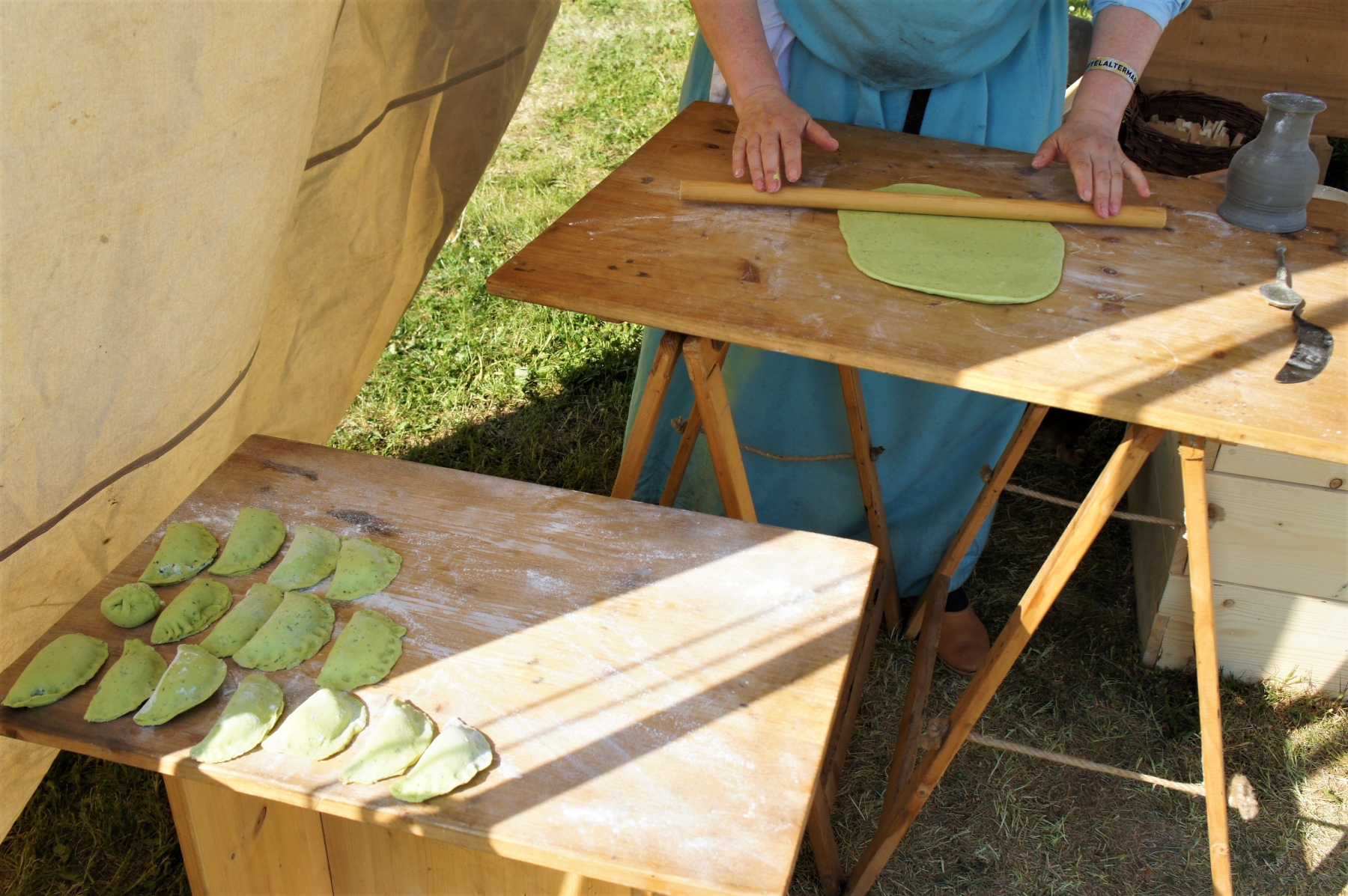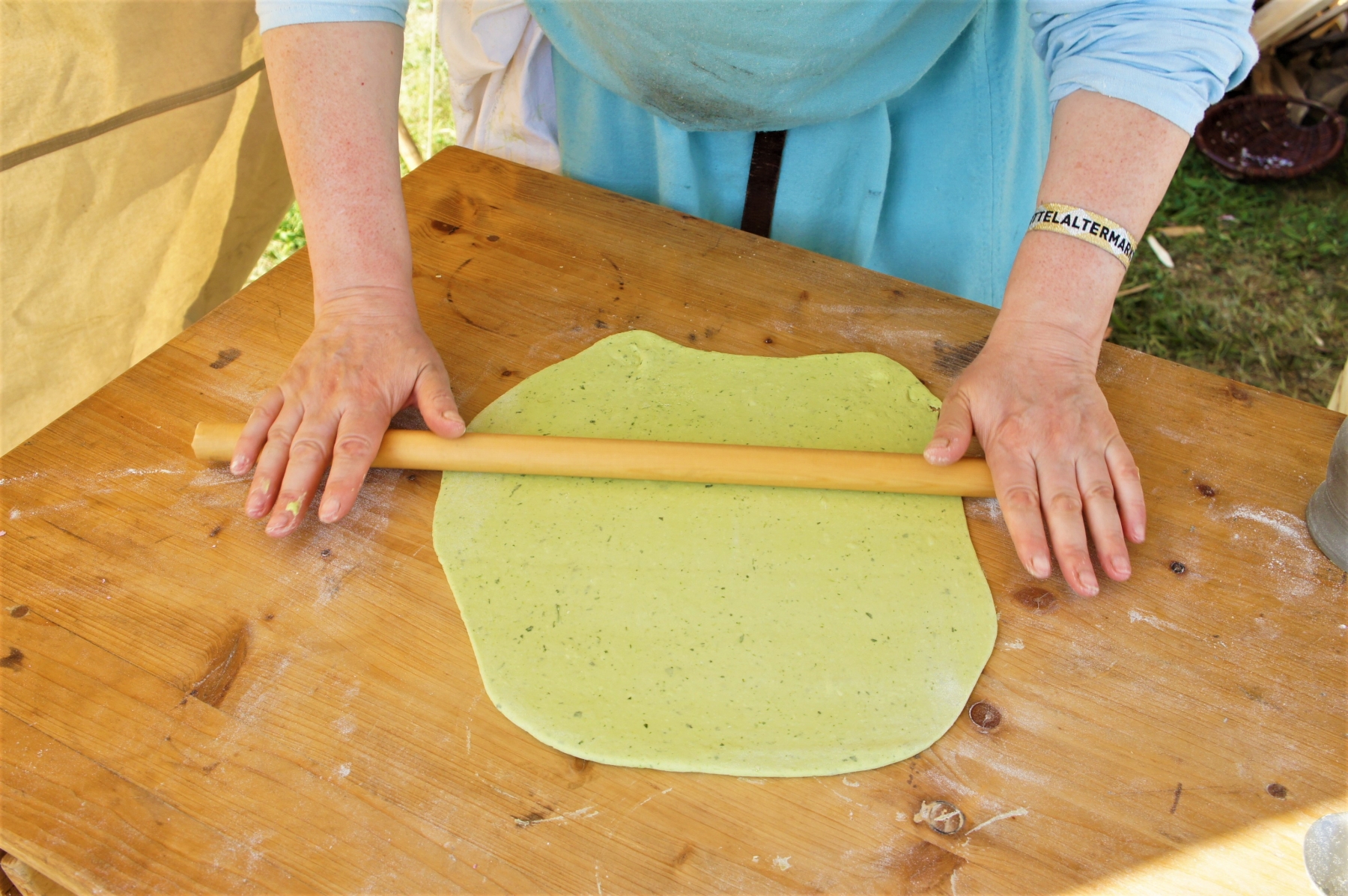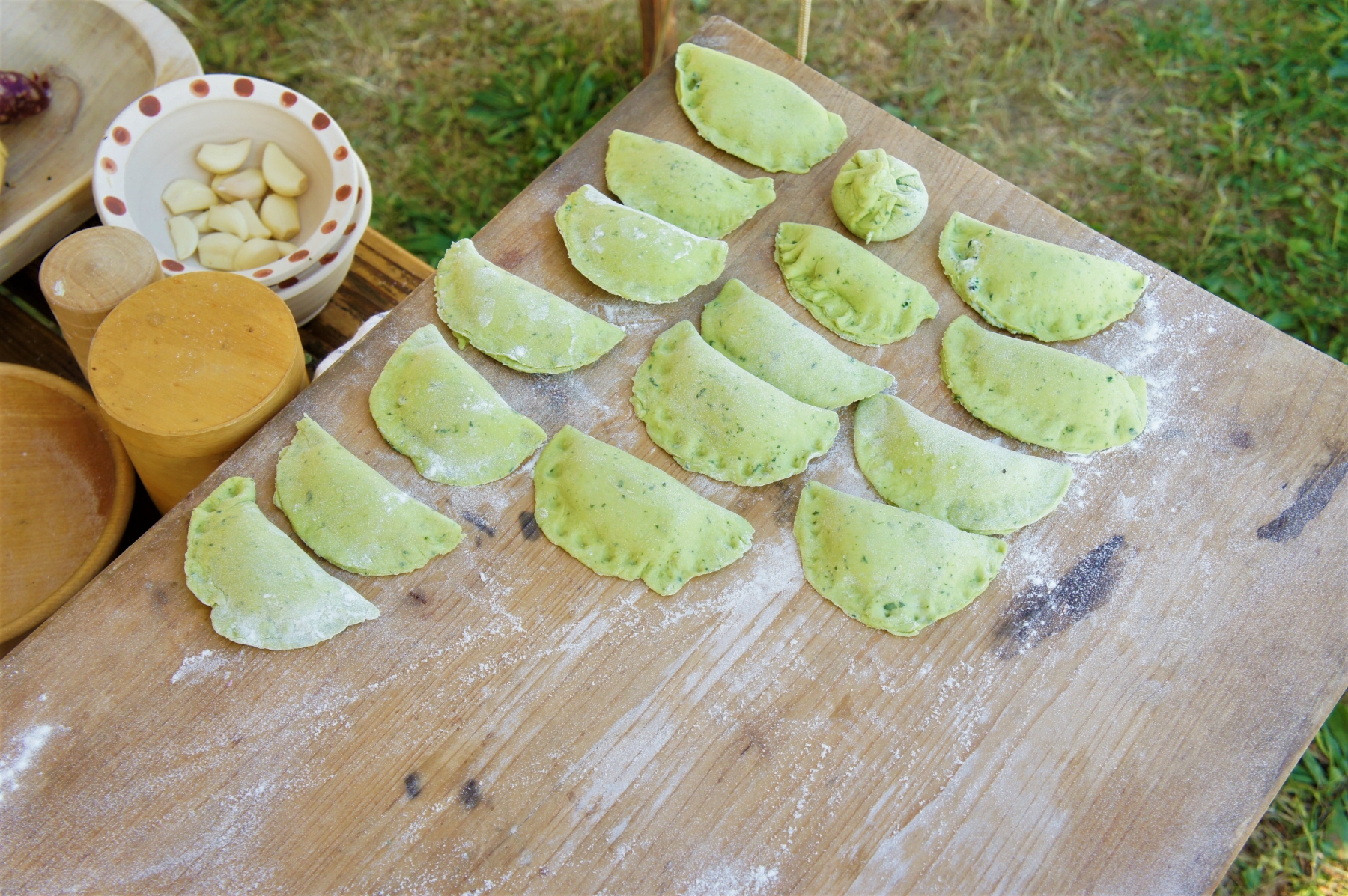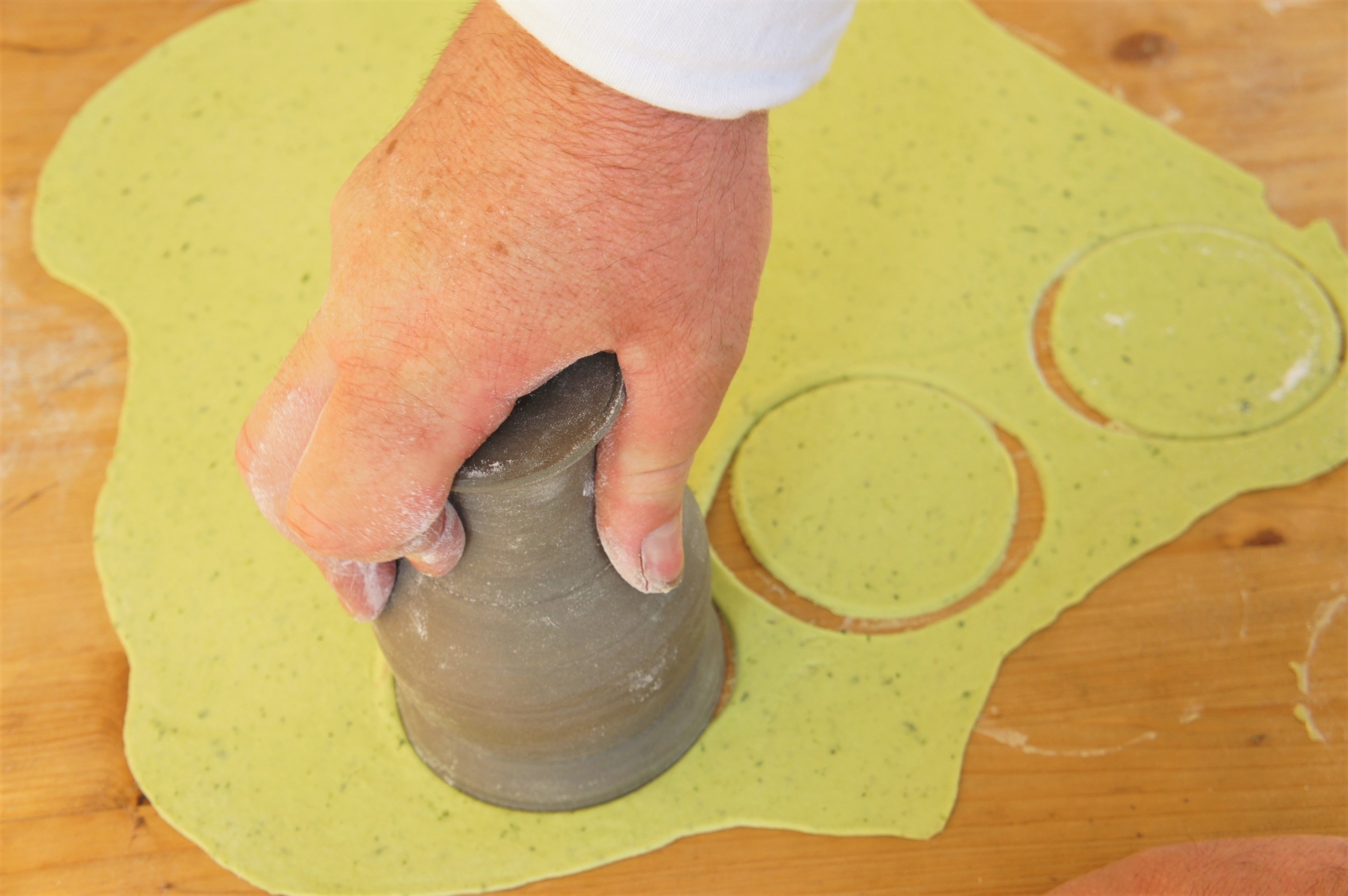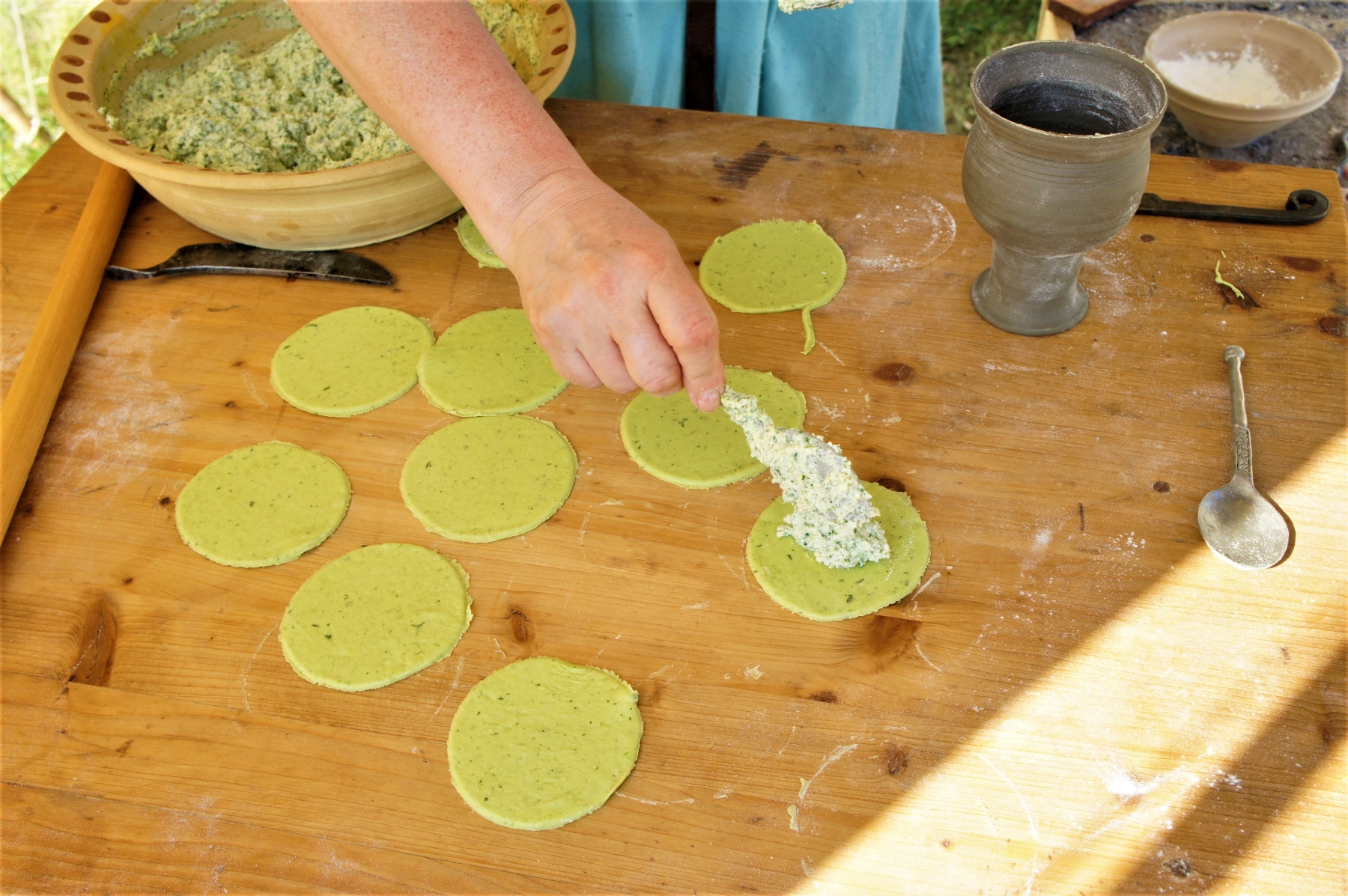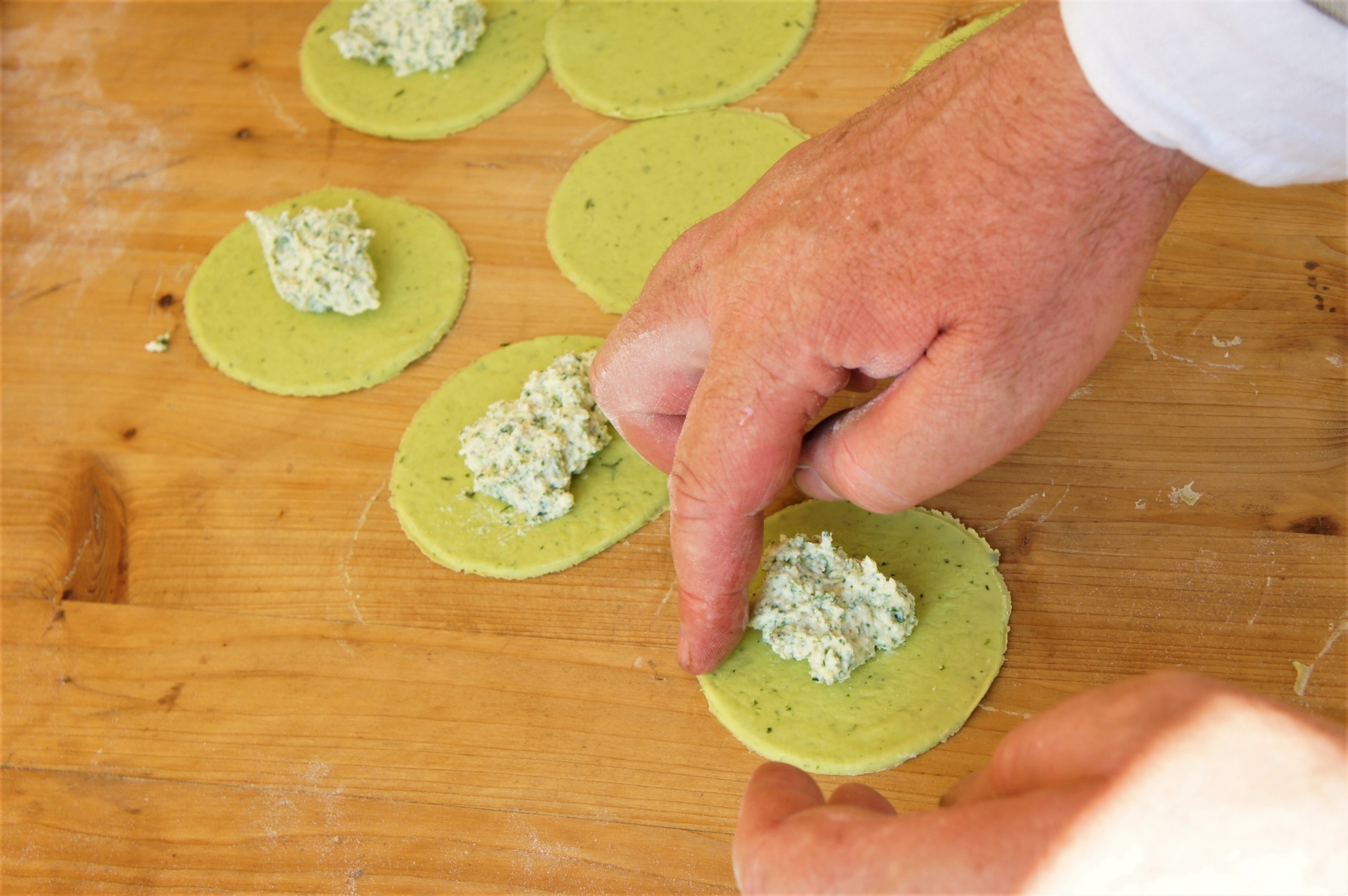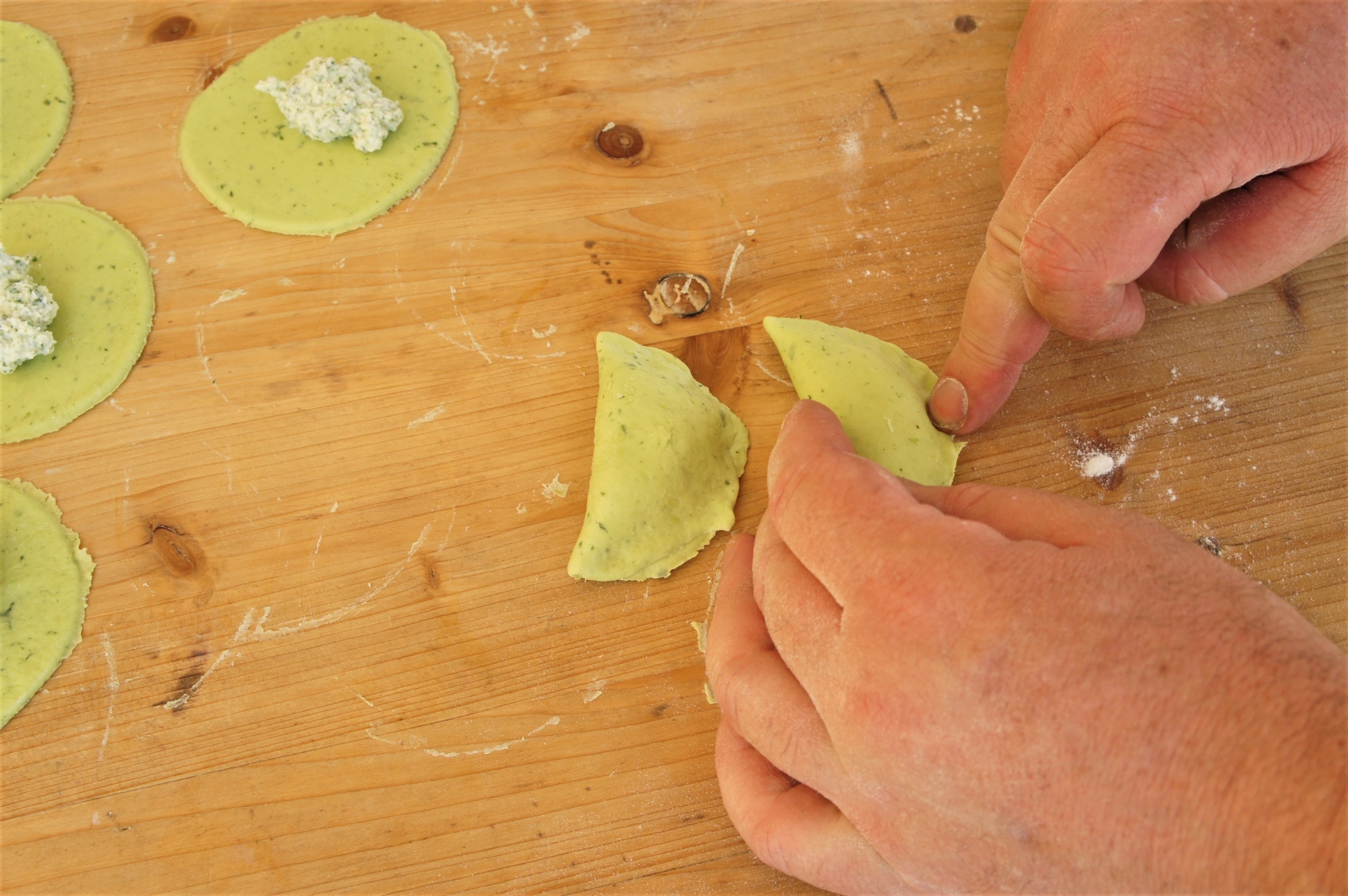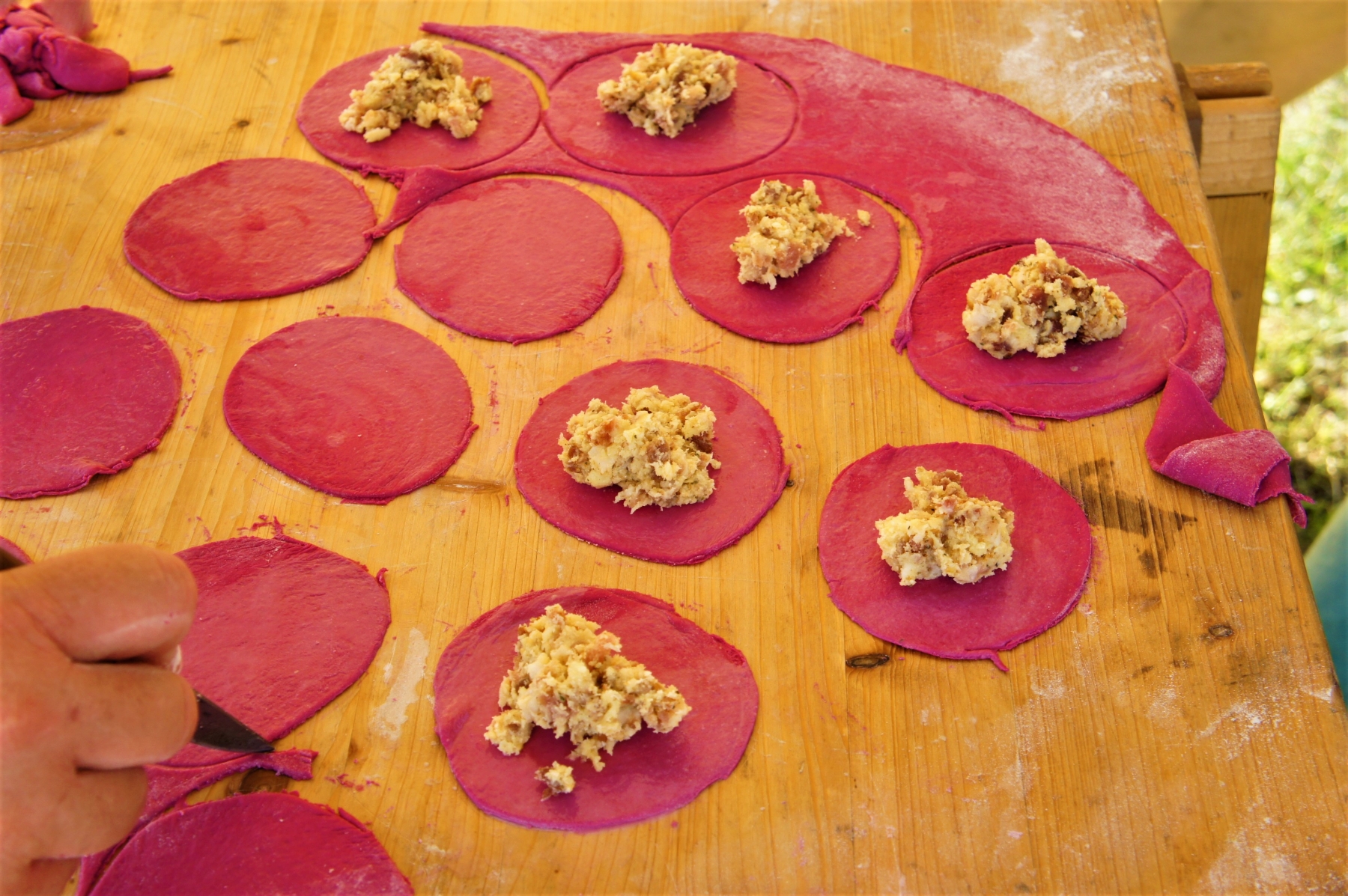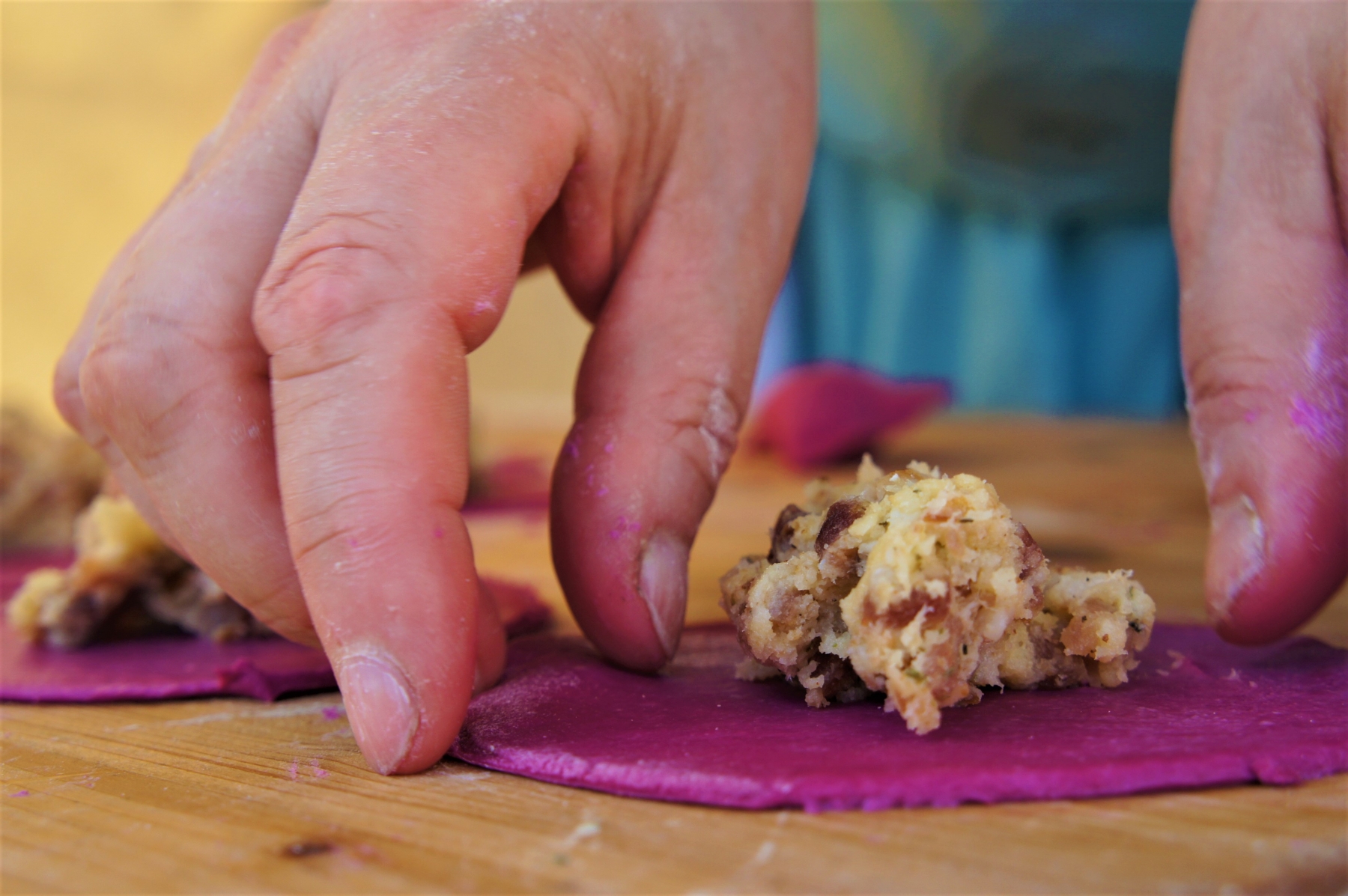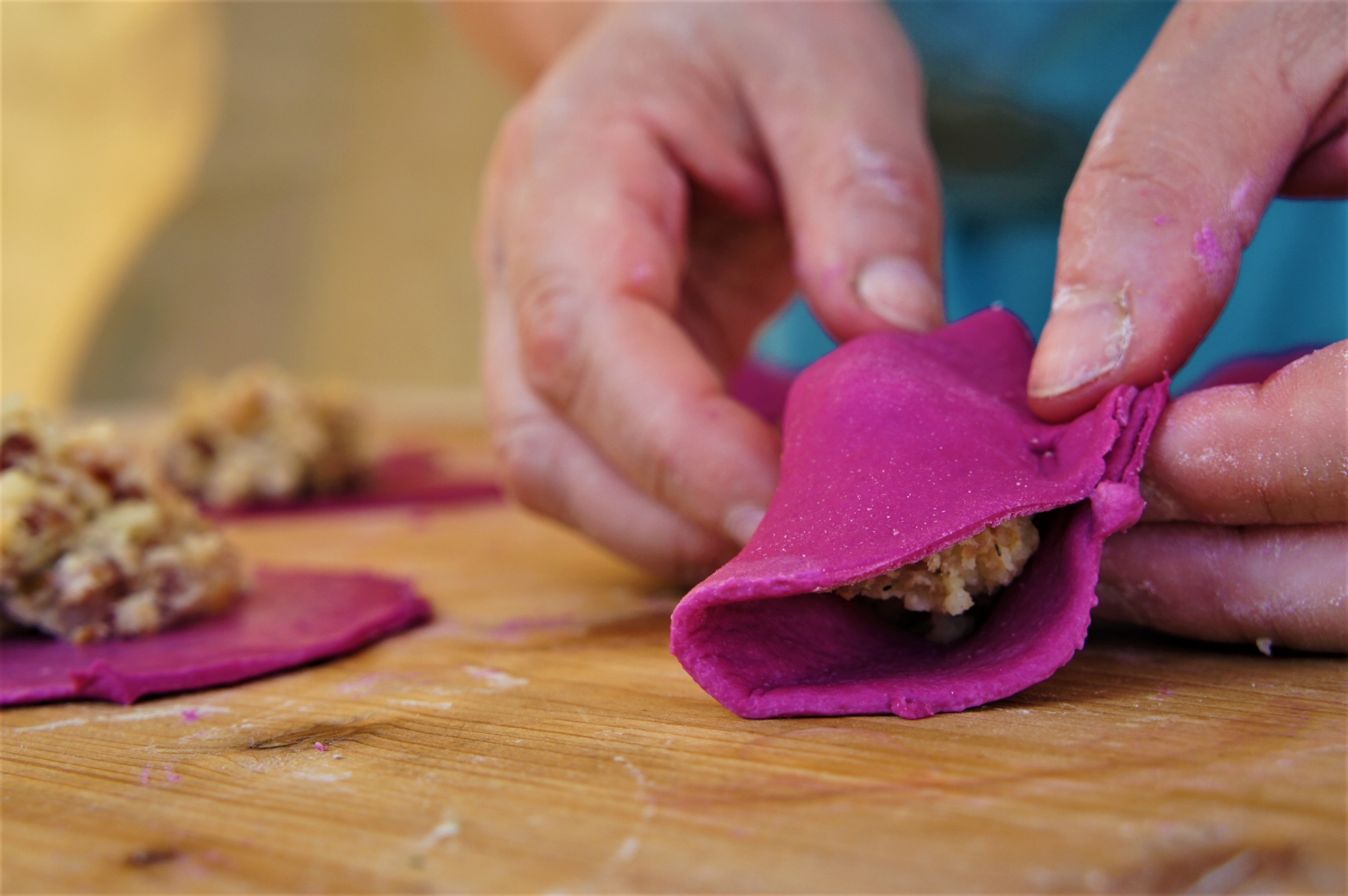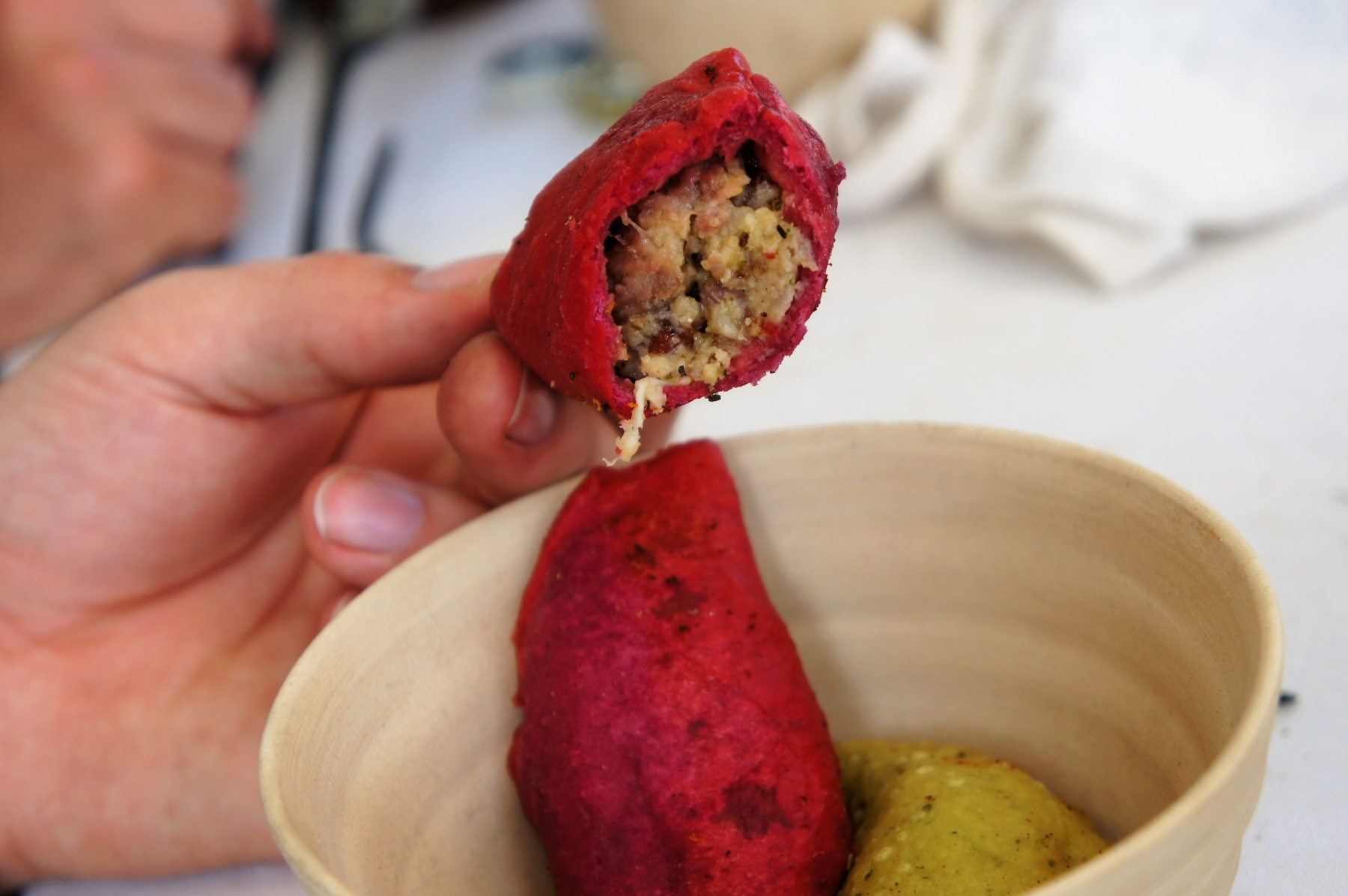De rauiolis : recipe uentrescam porci minute trittam siue pistatam
cum ouis, caseo, lacte et speciebus aliis. Et potes facere rauiolos
diuersimode qui sic fiunt :
In tortello gracili paste dure, inuolue de predictis ad quantitatem unius
oui et coque in patella cum magna pinguedine. Et loco paste, potes
inuoluere in pellicula que uoluitur in circumstancia uentris eduli uel alico
alio simili. Colora ut uis.
Quelle English
Leider hab ich dafür keine freie Übersetzung gefunden, da ich aber selber auf eine Übersetzung angewiesen bin, nutze ich die Ausgabe von Robert Maier (Hrsg.), Liber de Coquina, Frankfurt, 2005. Bei Maier hat das Rezept die Nummer 7.54, da die Rezepte der beiden Teile (Tractatus und Liber de Coquina) in der Ausgabe fortlaufend gezählt werden.
So haben wir es gekocht:
- Petersilie unter Zugabe von Wasser mörsern
- Petersilien-Wasser durch ein Seihtuch abgießen und das grüne Wasser auffangen
- Hefeteig mit dem grünen Wasser ansetzten (Anmerkungen zur Hefe siehe Links)
- Hefeteig gehen lassen
- Rohen Schweinebauch mit gesalzenem Wasser in einen Topf geben und aufs/ans Feuer geben
- Wenn der Schweinebauch durch ist, aus dem Topf nehmen
- Zusammen mit Speck sehr fein hacken (oder sogar mörsern)
- Das gehackte Fleisch mit Frischkäse und Ei zu einer Farce vermengen
- Salz, Pfeffer und Kräuter in die Farce geben und gut untermischen
- Den Hefeteig dünn ausrollen
- Kreise ausstechen und mit eine kleine Kugel Farce darauf platzieren
- Teig zusammenklappen und fest verschließen
- Die rohen Ravioli in Butterschmals ausbacken
Zutaten:
Roher Schweinebauch, Speck, Petersilie, Hefe, Mehl, Butterschmalz, Ei, Frischkäse (wir nehmen Ricotta)
Zutatenverhältnisse:
Fleisch : Käse – 1 : 1
Das Verhältnis Roher Schweinebauch zu Speck – Je nach Geschmack, je mehr speck desto intensiver
Küchengerätschaften:
Küchenmesser, Topf zum Kochen, großes Brett, Hackmesser, Schüssel, Gewürzmörser, mittlerer Mörser, Nudelholz (wir benutzen ein einfachen sehr langen Rundstab), evtl. großer Mörser für das Fleisch
Variationen:
Da wir oftmals auch Vegetarier unter den Speisenden haben, teilen wir die Füllung der Ravioli manchmal auf. In eine Fleischfüllung und in eine Käsekräuterfüllung. (In dem Fall geben wir ein wenig milden Käse zum gehacktem Fleisch)
Das Färben:
Im Rezept wird das Färben ausdrücklich erwähnt und es macht auch ordentlich was her. Die Grüne Farbe aus Petersilie zu gewinnen ist allerdings ne Menge Arbeit, aber es ist die Zeit am Mörser auf jeden Fall wert. (Die roten Ravioli haben wir nicht erwähnt, da wir noch gerade noch am Suchen sind ab wann rote Bete den überhaupt belegt ist oder mit was wir sie in Zukunft ersetzten 😉 In der Zwischenzeit haben wir die Rote Bete durch roten Traubensaft ersetzt, da die Rote Bete nich belegt ist, zumindest nicht in der Form – Stand August 2019)
Weitere Anmerkung:
Wir haben uns für Hefeteig entschieden, da das LC den Hefeteig bei der “Lasagne” erwähnt und er sich besser für das Backen in Fett besser eignet. Zum Thema Hefe im Allgemeinen…
Weiterführende Links:
Christa Schwabs Artikel zu Hefe
Bilder vom Kochen:
|LC-2.54| Ravioli – Backed
That’s how we cooked it:
- Mortar parsley with water
- Drain the parsley water through a cheesecloth and collect the green water.
- Make the yeast dough with the green water (for comments on yeast, see links)
- Let the yeast dough rest
- Put raw pork belly in a pot with salted water and add it to the fire
- When the pork belly is through, take out of the pot
- Chop the belly very finely together with bacon (or even mortar)
- Mix the chopped meat with the cream cheese and egg to a farce.
- Add salt, pepper and herbs to the farce and mix well
- Roll out the yeast dough thinly
- Cut out circles and place a small ball of farce on them
- Fold up the dough and close tightly
- Bake the raw ravioli in a clarified butter
Ingredients:
Raw pork belly, bacon, parsley, yeast, flour, clarified butter, egg, cream cheese (we take ricotta)
Ingredient ratios:
Meat : cheese – 1 : 1
The ratio raw pork belly to bacon – depending on taste, the more bacon the more intense
Kitchen utensils:
Kitchen knife, pot for cooking, large board, chopping knife, bowl, spice mortar, medium mortar, rolling pin (we use a simple very long round stick), possibly large mortar for the meat.
Variations:
Since we often have vegetarians among the diners, we sometimes divide the filling of the ravioli. In a meat filling and in a cheese herb filling. (In this case we add a little mild cheese to the chopped meat)
The colouring:
In the recipe, the dyeing is explicitly mentioned and it also makes a lot of impression. To get the green colour from parsley is a lot of work, but it is definitely worth the time at the mortar. (We didn’t mention the red ravioli, because we’re still searching for when the beetroot is covered or what we’ll replace it with in the future 😉 )
Further note:
We chose yeast dough because the LC mentions the yeast dough in the “Lasagne” and it is better suited for baking in fat. About yeast in general…
Further links:
Christa Schwabs Artikel zu Hefe (in German)
Quelle des von uns verwendeten Rezepttextes:
Liber de coquina ubi diuersitates ciborum docentur (saec. XIV.), ed. Mulon, Marianne
aus der Sammlung Monumenta Culinaria et Diaetetica Historica
Datei-Info der Gesamtdatei:
Liber de coquina ubi diuersitates ciborum docentur (saec. XIV.)
— Text based upon: Mulon, Marianne: Deux traités inédits d’art culinaire médiéval. In: Bulletin philologique et historique (jusqu’à 1610) du Comité des Travaux historiques et scientifiques. Année 1968: Actes du 93e Congrès national des Sociétés savantes tenu à Tours. Volume I: Les problèmes de l’alimentation. Paris 1971, 369-435; the text of the Liber de coquina on p. 396-420.
— Digital version: Thomas Gloning, 9/2002
<> etc. = page numbers of the Mulon edition; — I changed some spaces before or after certain punctuation marks (e.g. “. 4.” to ” .4.”). — I kept the linebreaks of the edition, but removed hyphenation in order to facilitate the search for word forms. — For the introduction, the apparatus and all editorial matter, please see the printed Mulon version. Cf. also: Bruno Laurioux: Le règne de Taillevent. Paris 1997, passim (see index, p. 417 s.v. Liber de coquina). — Certain places in the text are puzzling to me, e.g. II-20 “… et ponatur in spico ad inssandum”; it seems to me that such places would have deserved some editorial commentary: be it emendation, be it explanation that these forms are o.k. for, say, some region of 14th century Italy, or be it only confirmation that this is simply what the scribe(s) wrote.
— (c) You may use this digital version for scholarly, private and not-profit purposes only. Make sure that you do not violate copyright laws of your country. Do not remove the header from this file.

